This is not, thank the heavens, yet another reboot. This is en entirely new story. Kong never leaves Skull Island, doesn't rampage in New York, doesn't get killed. Which is what the franchise needed: a new human story. This is something that The Host demonstrated. A new human plotline, drawing from other genres. This is the culmination of Shin'ichi Sekizawa's idea that the human stories and the kaiju stories should interact. Before him, the humans simply reacted to the presence of the monster. Sekizawa tried, and succeeded, to the best of the technology available to the films he wrote, to have the stories touch and impact each other. Early examples of this include the extensive use of spy tropes and ideas in films such as Godzilla vs Mechagodzilla and Godzilla vs Biollante. With CG allowing the human characters to seem to touch the giant monsters, new stories and new interaction can be achieved. This even goes as far as the big battle in the end. Weaver lands a flare on the side of Ramarak’s (the big skullcrawler) head, distracting it. When Kong is chained and helpless, the humans fire their very large gun to keep Ramarak from killing him.
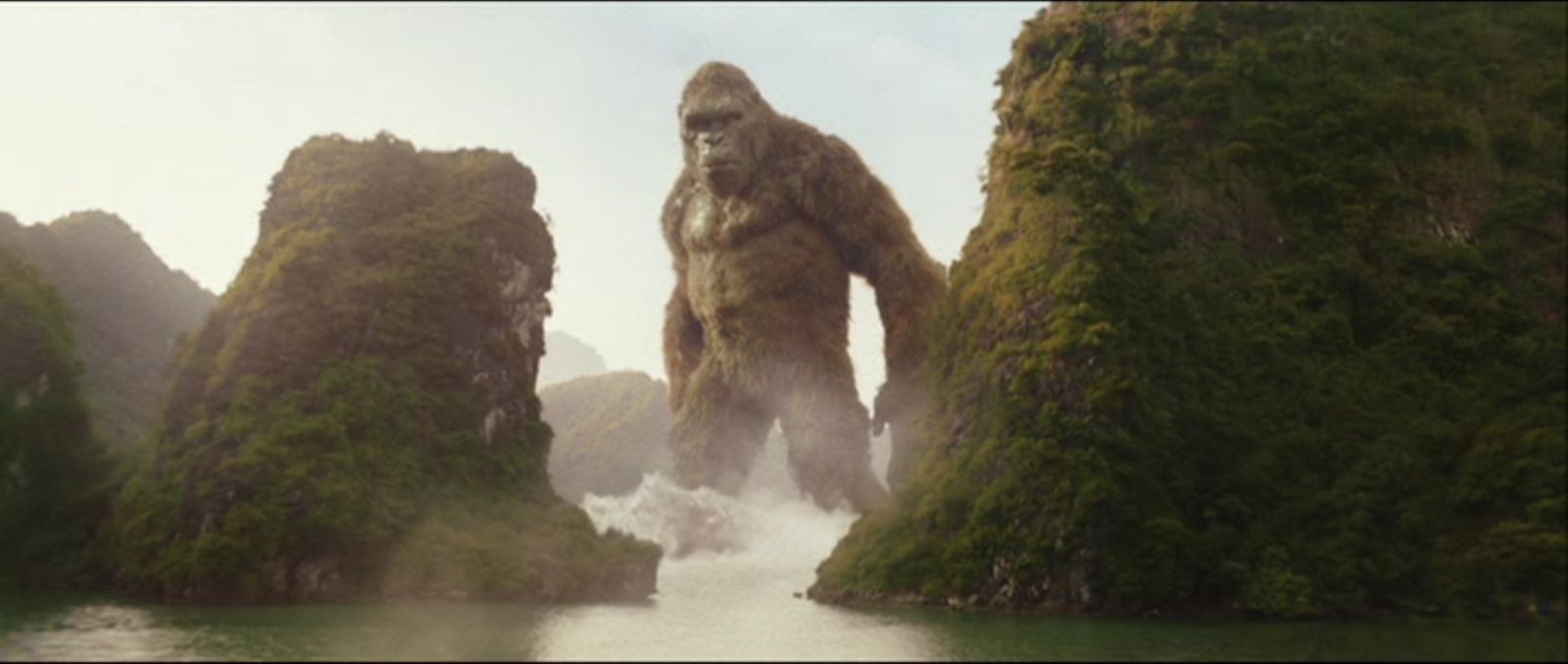
Kong: Skull Island pulls the majority of its human story from the Vietnam era and Vietnam films, specifically Apocalypse Now. This is, very specifically a war story. The emotional beats, the slow and difficult to predict elimination of the cast. The film rewards those who can think outside of their circumstances. Marlow and Japanese pilot Gunpei fight each other, only to stop when Kong arrives. In the tense confrontation between Colonel Packard and the civilians (Conrad, Weaver, and Marlow), soldier Slivko realizes Marlow is right, and switches sides. This saves him. Packard, Ahab-like in his thirst for vengeance infected by war, refuses to retreat, and is casually killed by Kong.
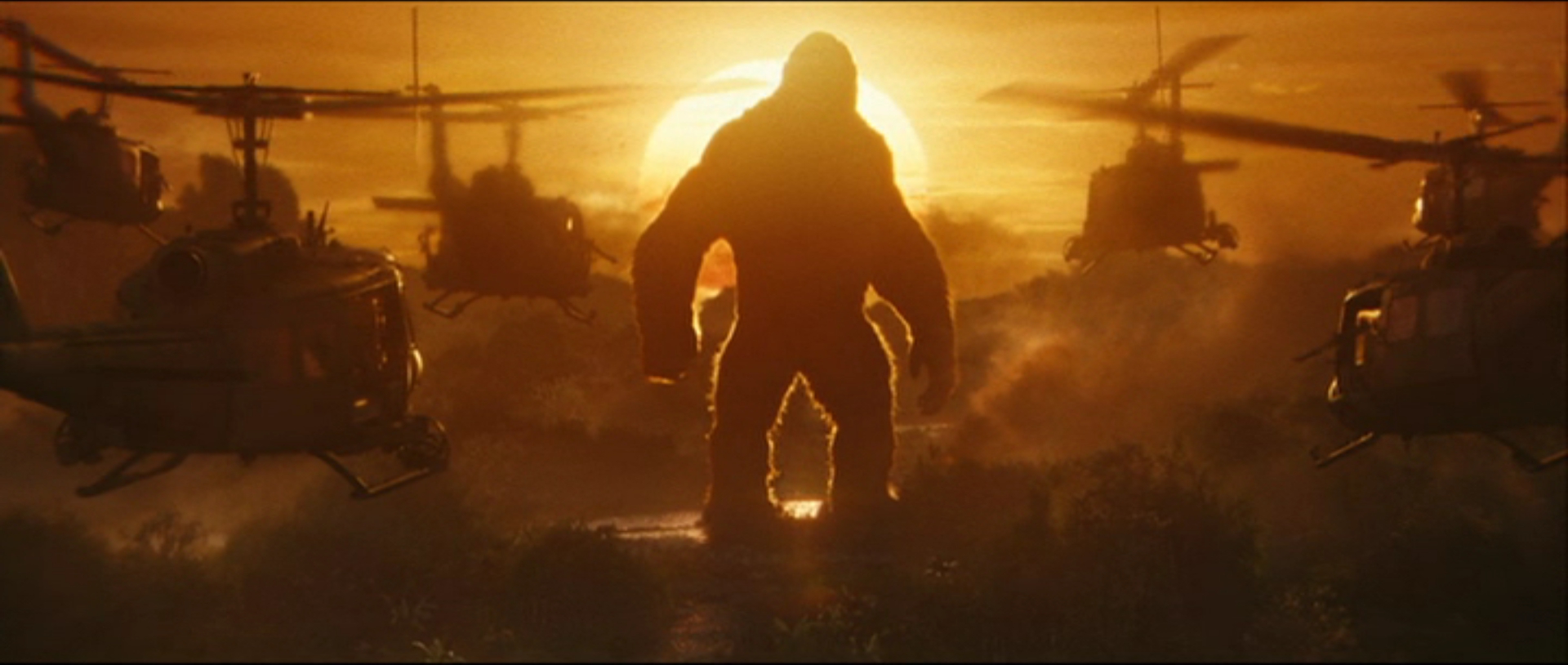
The film is also a meditation of the effects of war on the individual. Gunpei and Marlow become good friends once they are isolated from the world. On Skull Island, the war of their societies no longer dictates their actions. The film's attitude towards war is best exemplified by the death of Cole. Tired of running from skullcrawlers, Cole decides to sacrifice himself to take down Ramarak, walking towards it with armed grenades. Instead of eating him, it smashes him with its tail, killing him when he impacts a cliff, when his grenades go off. His sacrifice, which he had hoped would save his comrades, is useless.
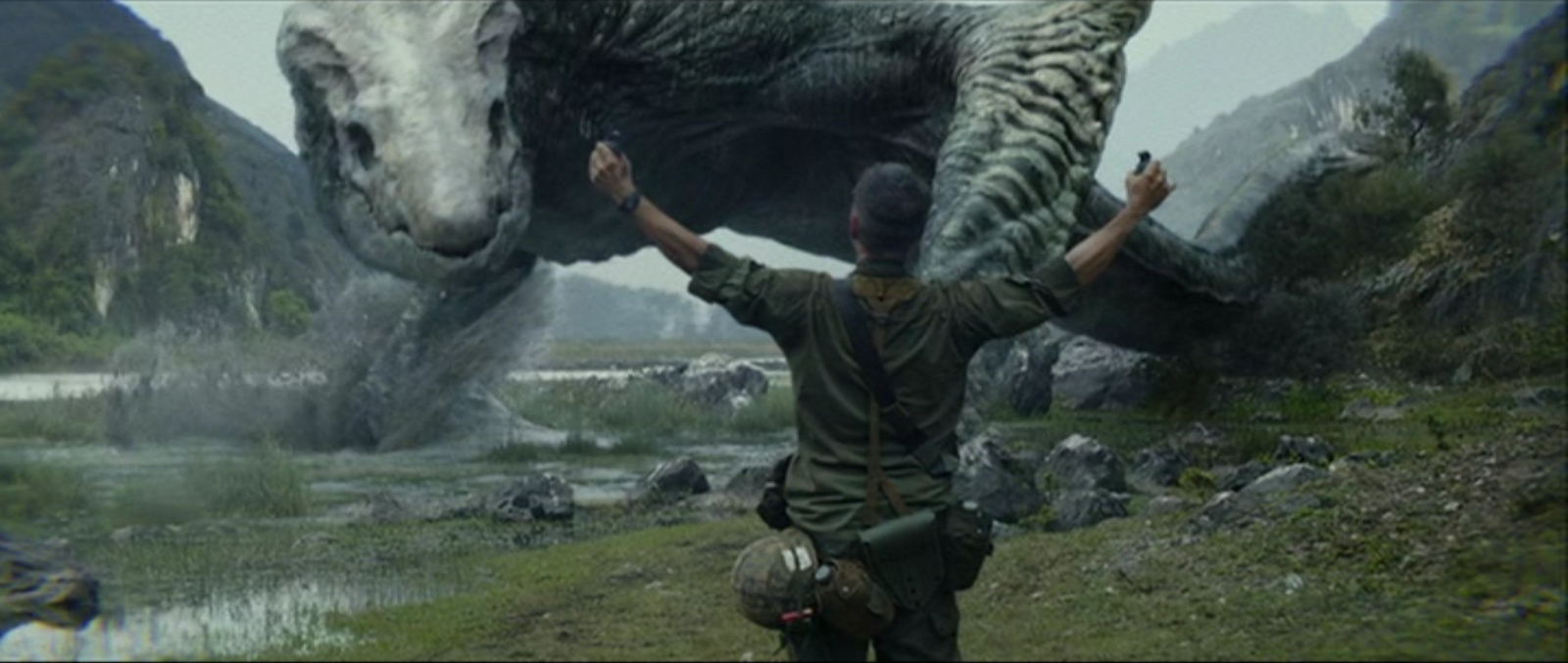
Kong is, literally a reflection of what people bring with them. He is seen as a god and protector by the people who live near him, the Iwi. Colonel Packard sees him as a threat that must be destroyed, even after Kong’s relative benevolence is explained. But Kong destroyed Packard’s helicopters, and he has to pay for that. The film moves us from being hostile to Kong to being sympathetic to him, and Packard goes from being sympathetic to the enemy. Director Jordan Vogt-Roberts hammers that point home with a repeated image: a figure standing against a bright light in the darkness, fists clenched. At the beginning of the film, the figure is Kong. Toward the end, it’s Packard.
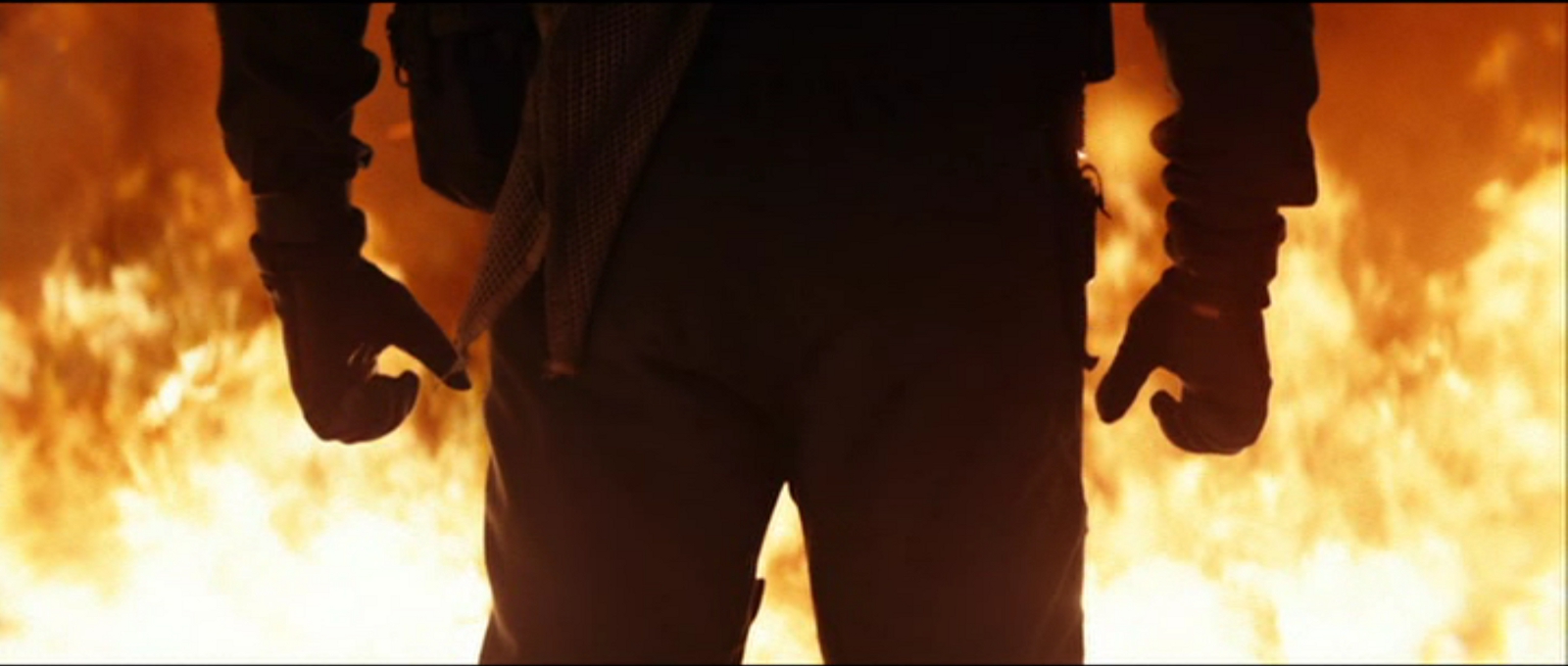
This also means that Kong: Skull Island has a very different approach to the military than other kaiju films. Very often, the powerful military commanders are front and center of a kaiju film, as they watch their plans unravel as the kaiju proves difficult to kill. But where Ishiro Honda played the military purely for show, and the 1998 Godzilla played them for expendable chumps, this film shows us the humanity of the soldiers. Chapman is writing letters to his son, and the other soldiers razz him for it. These are very human characters, and their lives are on the line when the kaiju attacks. Or is attacked. Kaiju film characters have previously been military men, for example Ford Brody in 2014 Godzilla, but he didn't spend much screen time with his unit. The relationships, in their complexity, are showcased here. Mills, Cole, Sivko, and Reles support each other, mock each other, and express doubts about Colonel Packard's orders, even as they carry them out. Edit: I had forgotten that this is literally the approach of Monsters: Dark Continent. However, I will say that the character development is significantly better in Kong: Skull Island. The unit in Monsters: Dark Continent are also significantly more on edge. But the cast in Kong: Skull Island us much more interesting.
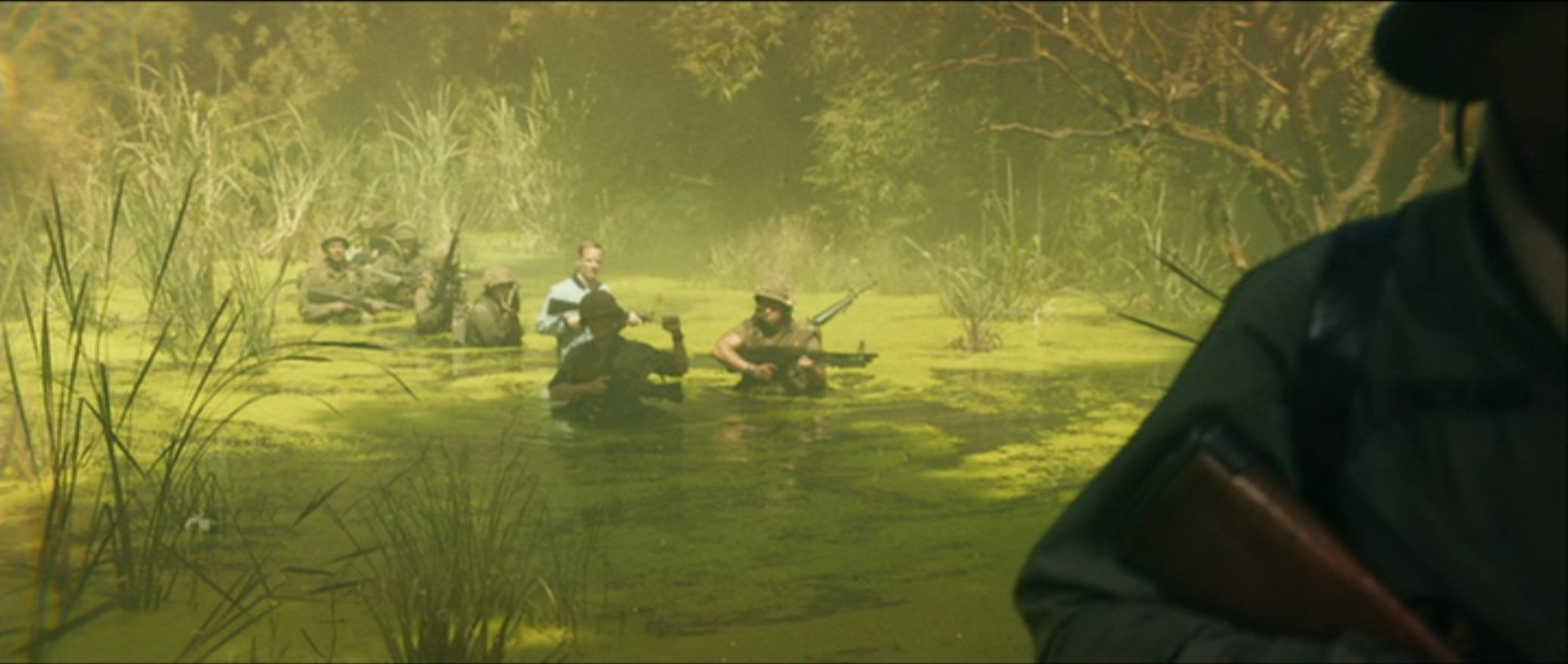
Kong initially attacks the expedition because the military is doing what they are told: deploying Monarch's seismic explosives, which were intended to bring whatever kaiju lived there to the surface. The helicopters are armed, so the mission is definitely to eliminate it. This is why Kong gets stirred up, and why lives are lost. The military is caught in the middle, obeying orders and taking the consequences and losses for those actions. So there's a fair amount of nuance in the film's approach to the military, which, again, stands in very stark contrast to the way they were treated in the 1998 Godzilla
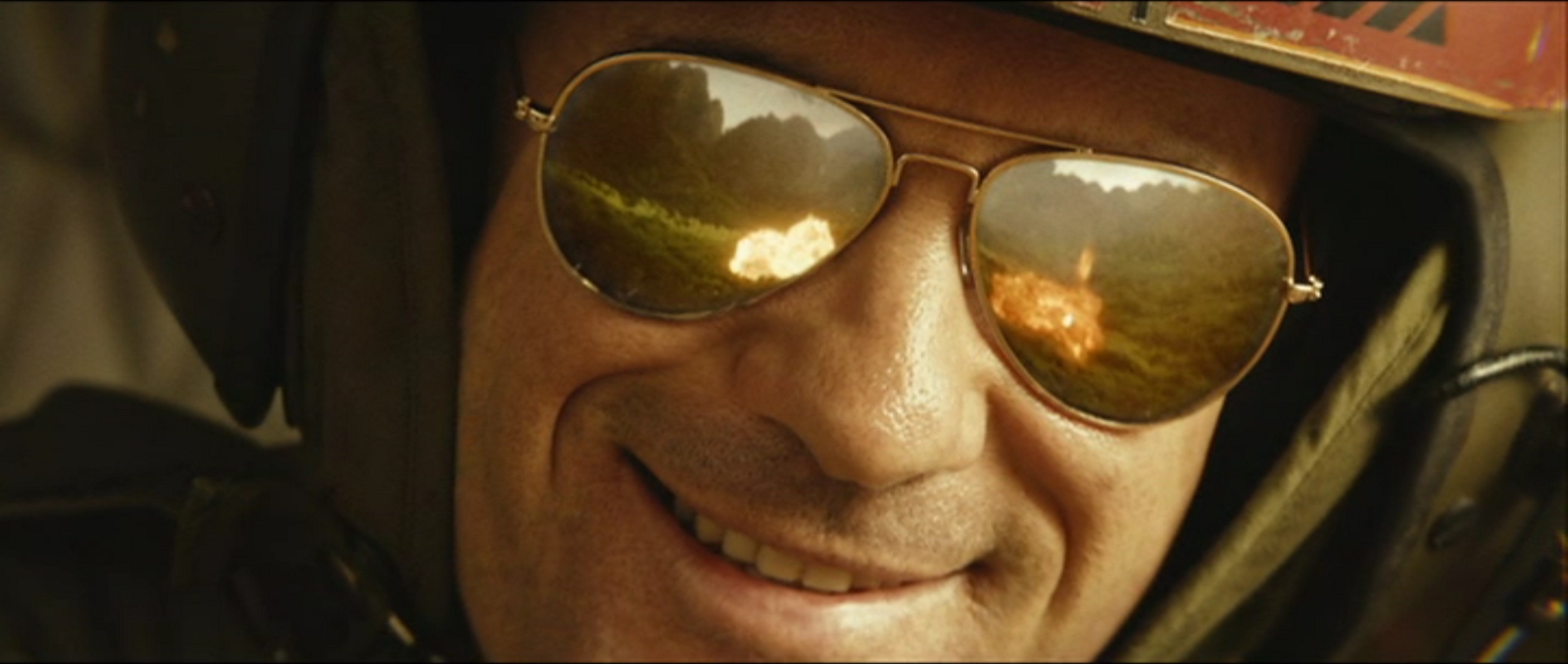
Some of the baggage Kong: Skull Island rejects is the racist subtext of the previous Kong films, and this sets the film on a much more even keel. Kong is not captivated by a blonde. He is not captured and taken to New York, to be killed by the forces of the establishment. The Skull Island natives, the Iwi, aren't the degenerate troglodytes of the Jackson film, or the stereotypical Africans oddly inhabiting a South Pacific island as in the 1976 and 1933 versions. They are mysterious and complex. They appear peaceful, but have spears to defend themselves. The large wooden wall they have constructed has outward-facing stakes, and those stakes are bloodied. Hank Marlow, who has been living among them for more than twenty years, sort of understands them. But he neither an accepted part of their society, nor running it.
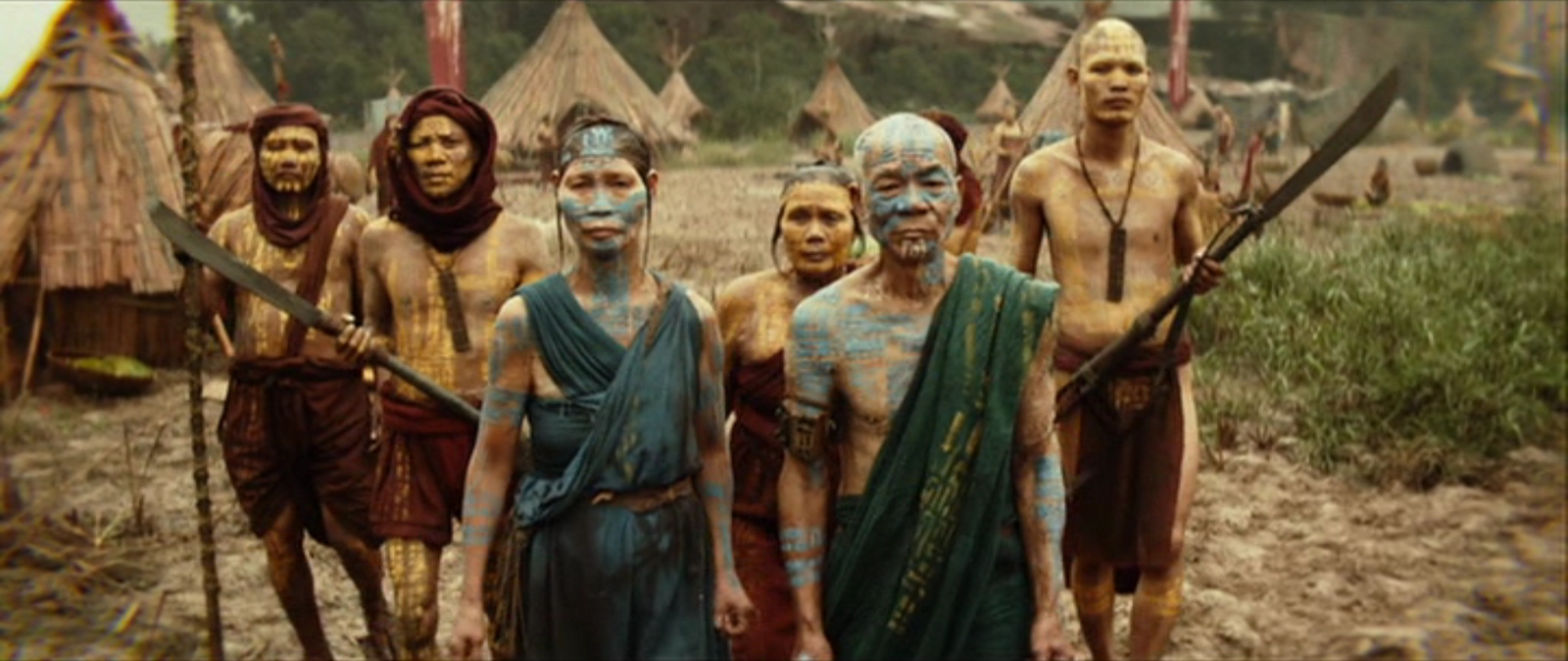
Further, for the first time, a Kong film gives me what I have always wanted: a beautiful Skull Island. Filmed in part in Vietnam's Ha Long Bay, the landscape is beautiful and feels fantastic and at the same time real. It also has a more developed ecosystem. Previous films have portrayed the island as relentlessly hostile, and nothing is introduced that isn't trying to kill the humans of Kong. This Skull Island isn't. There are huge yak-like creatures, deer, birds. Of course, there are hostile critters; the flying knives, the giant bugs, the skull-crawlers, and Kong himself.
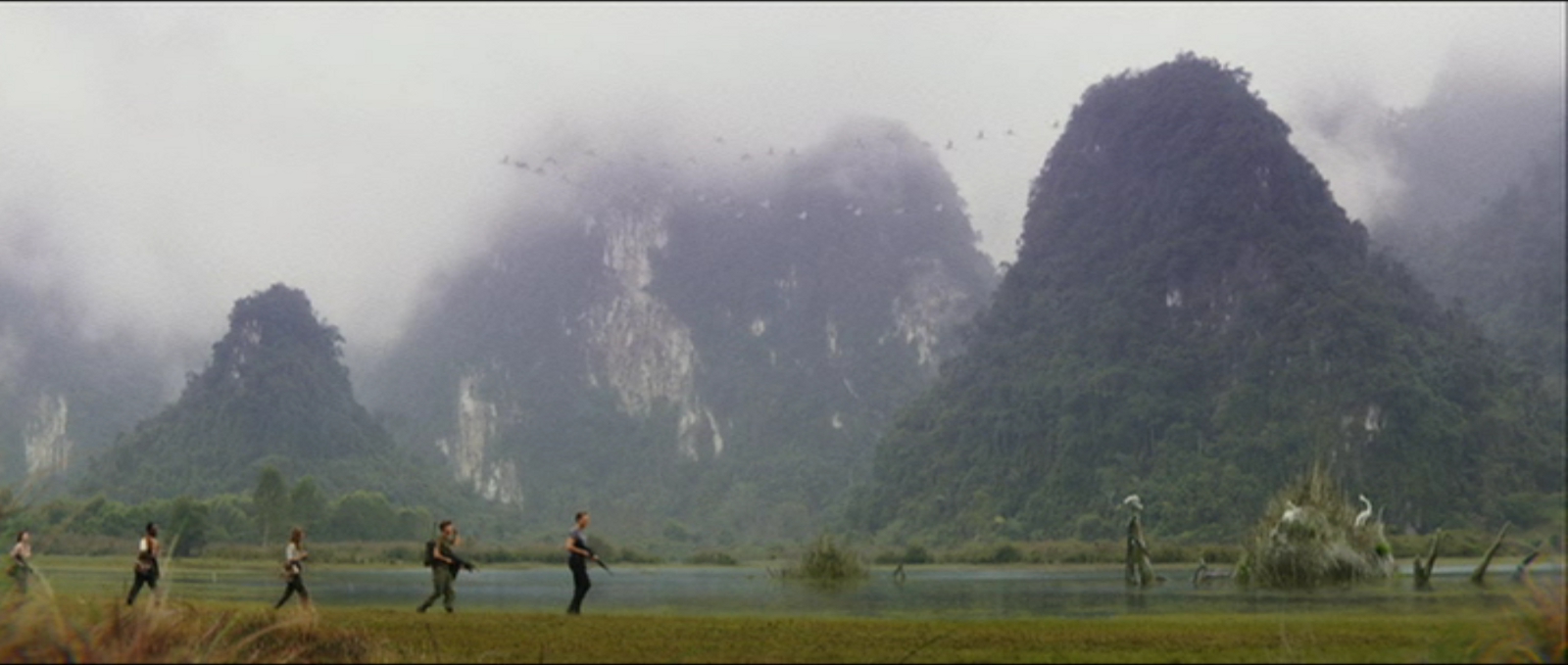
Monarch is very different from the branded helicopter-riding group we see in the 2014 Godzilla. They are literally down to two men, begging for funds from a senator who has put them off four times already. Bill Randa is the sole survivor of the USS Lawson which, we see in a picture, was clawed by a gigantic creature. But we don't know which kaiju it was. Perhaps the next film in the series will tell us: Rodan, Godzilla, or King Ghidorah. It seems unlikely to have been Mothra.
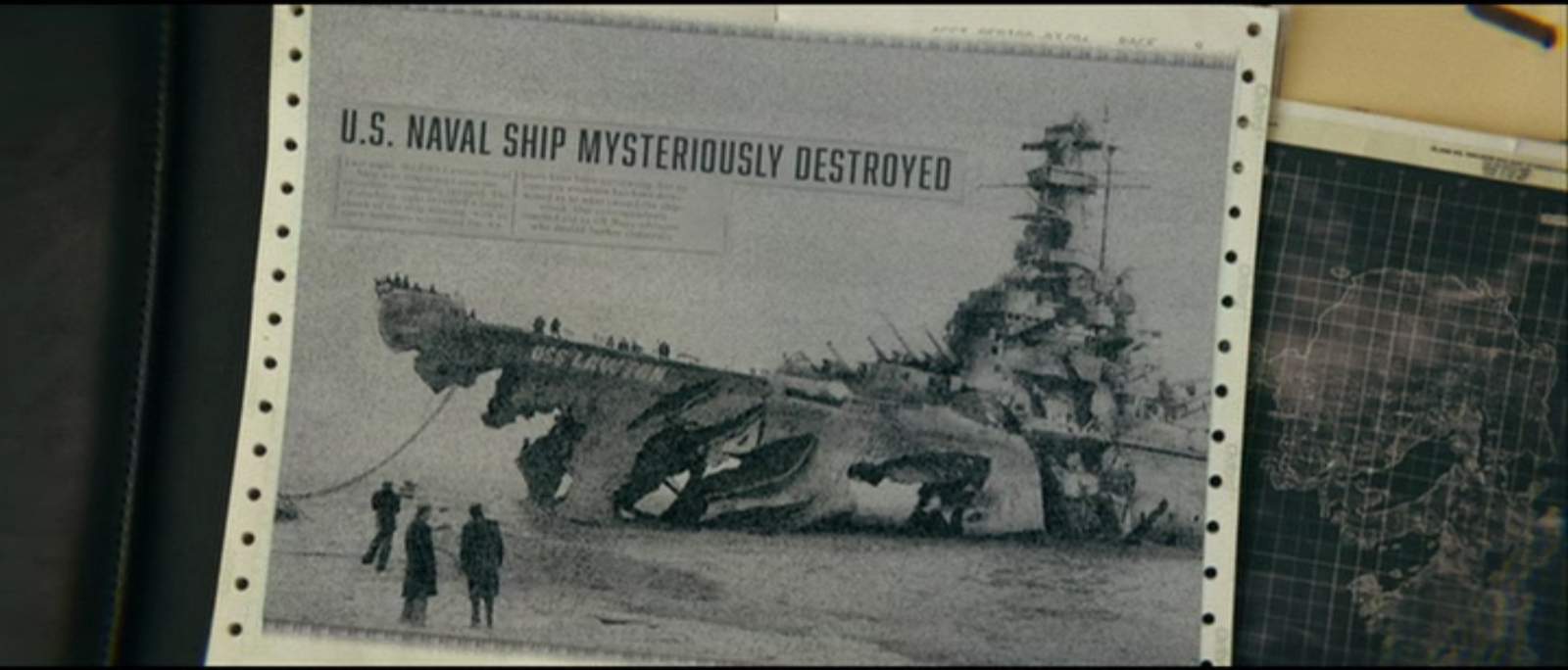
I love the design of the skullcrawlers, certainly more than I liked the MUTOs. Clearly taken from the two-legged lizard from the original King Kong, they move very smoothly, and their biology looks interesting. It occurs to me they look like a less-mutated version of gwoemul, which also had that two legs forward ambulation. Whoever decided on their weird-ass tongues should be particularly commended. They are like land-traveling kaiju-scale crocodiles, lizard-like, threatening, and credibly swift. Although the fights with the small ones are easy wins for Kong, they also serve to get the audience familiar with their abilities. This way, we can anticipate the moves in the big fight at the end. Interestingly, none of the kaiju present with supernatural abilities, such as atomic breath or lasers from its back. Flying, fire-breathing turtle Gamera would feel very out of place on Skull Island.
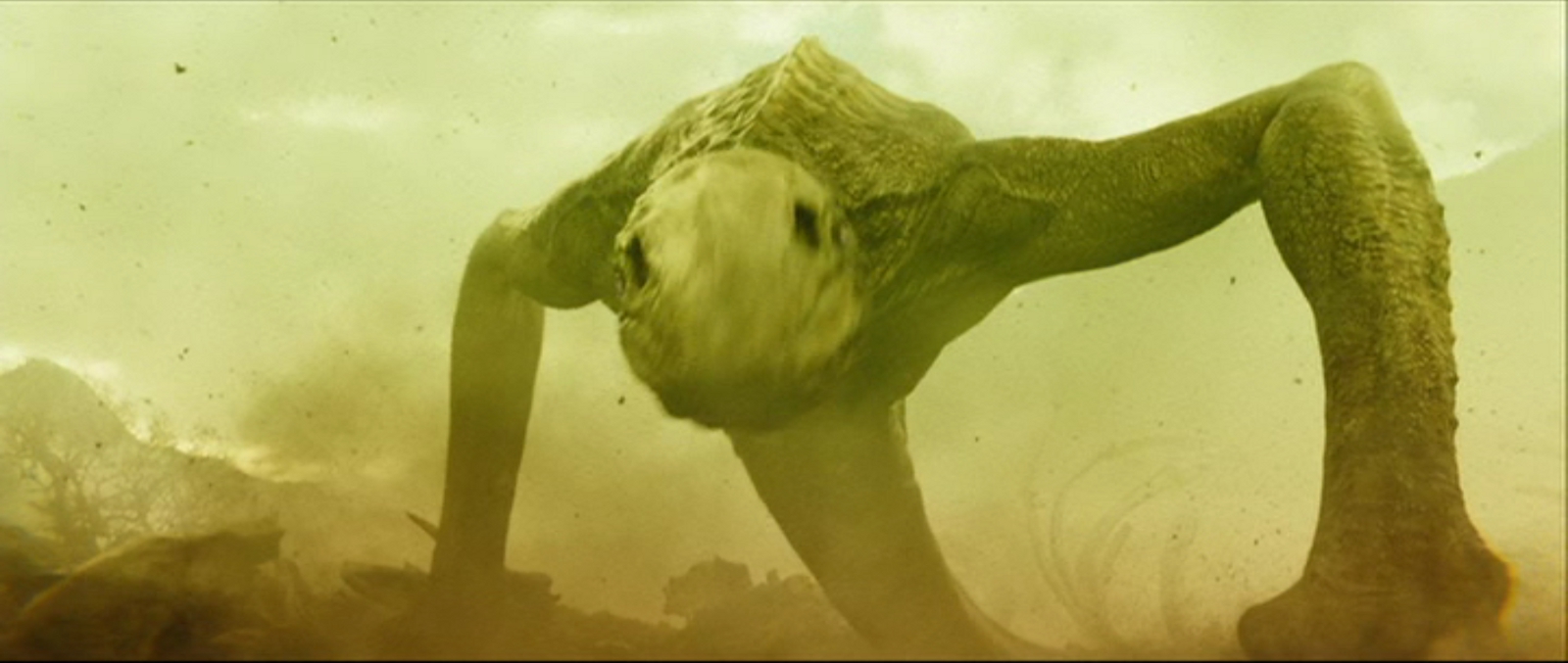
Kong's design is also well thought-out. He looks like a modern, clearer vision of the 1933 Kong. With short legs, long arms, and upright posture, he looks a bit more like a missing link than a gorilla. As a result, he is unpredictable. We know gorillas. But how certain are we about Kong? Even our previous movie experience, which the film Jordan is well aware of, does not tell us everything we need to know about this Kong. He's god of the island, according to Marlow. And the films gives us ample opportunity to see why.
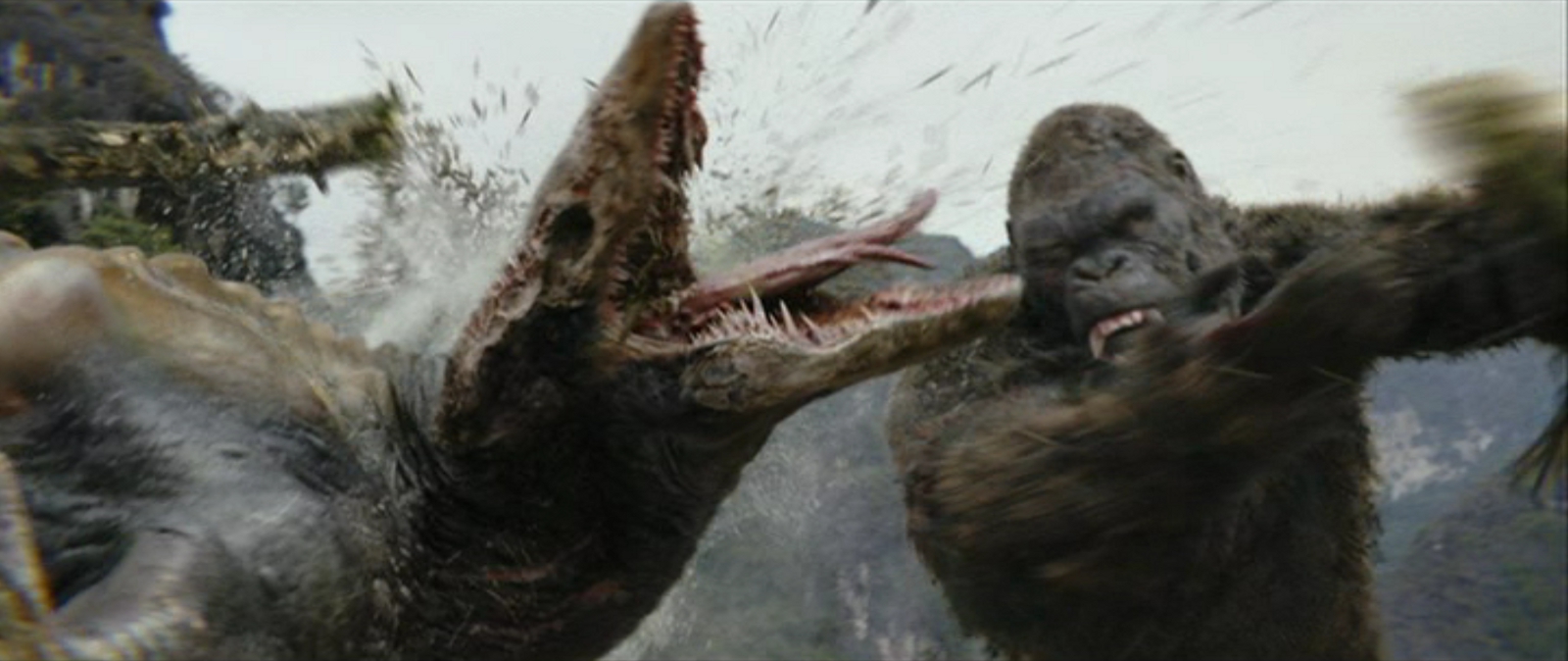
Kong demonstrates Cloverfield-level sneaking, which is to say being quiet by not being in frame, only once, when a gigantic oxen is trapped under a broken helicopter. Kong, to our surprise, lifts the helicopter, freeing the trapped creature. So there is room for compassion in him. Also, he's shown to be smart, and a significant portion of the Kong-Ramarak fight at the end is him learning. He uses tools: a tree stripped of branches, a rock, and the propeller from a wrecked ship. Among other things, this is better movie-making than having scientists tell us how smart Kong is, as in the American version of King Kong vs Godzilla. Kong is also described in a similar fashion to Godzilla in the 2014 film and Shin Godzilla: Not just a king, but a god.
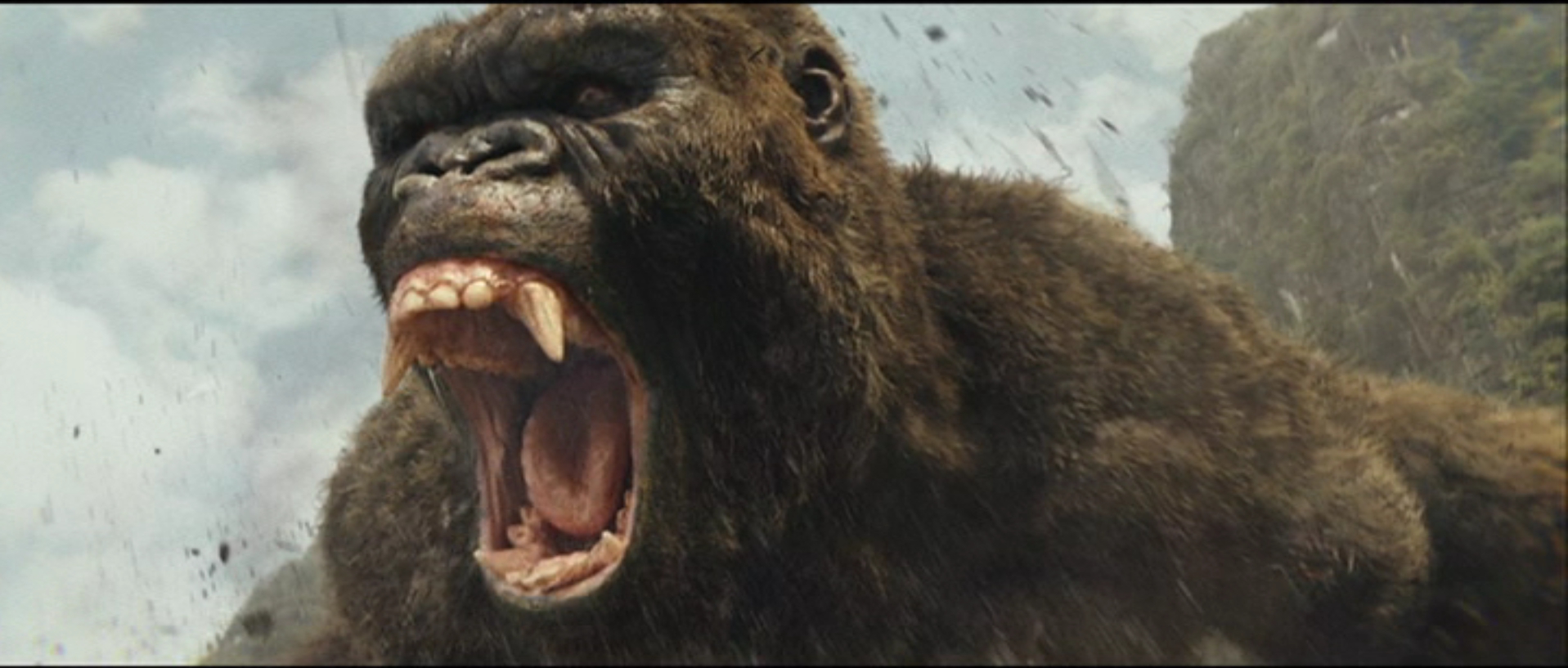
The cherry on top of all this kaiju goodness is the end post-credits scene, in which Conrad and Weaver are inducted into Monarch. Drawing on the Godzilla opening credits, we are shown cave paintings of three opponents from the next Godzilla film:
Rodan
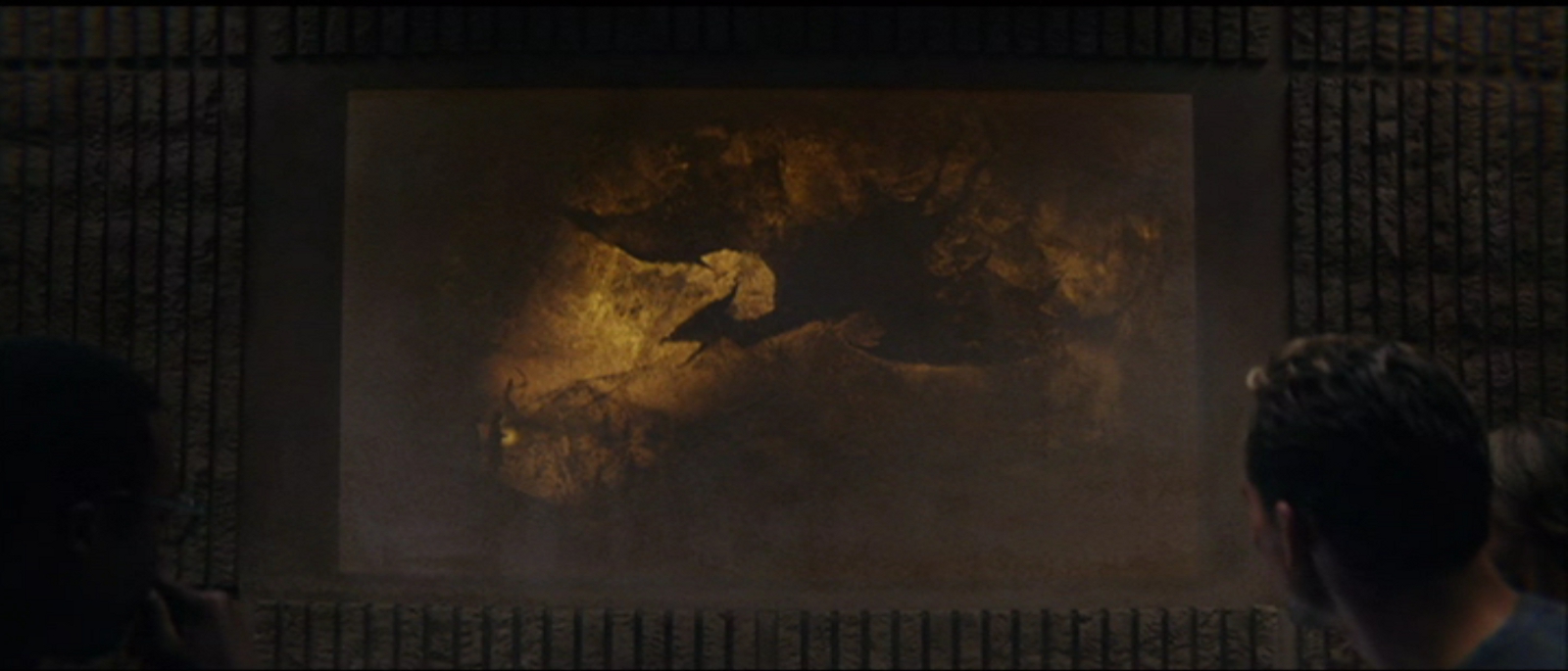
Mothra
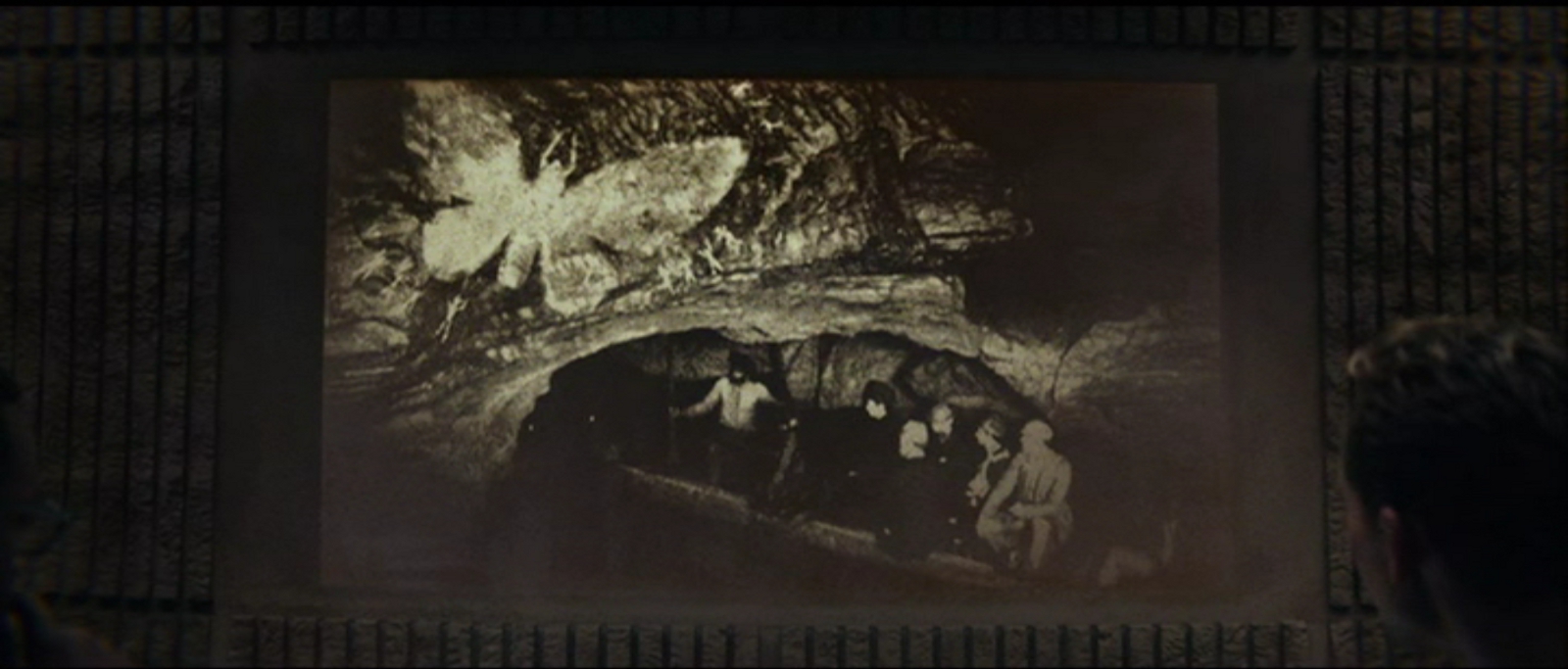
King Ghodirah
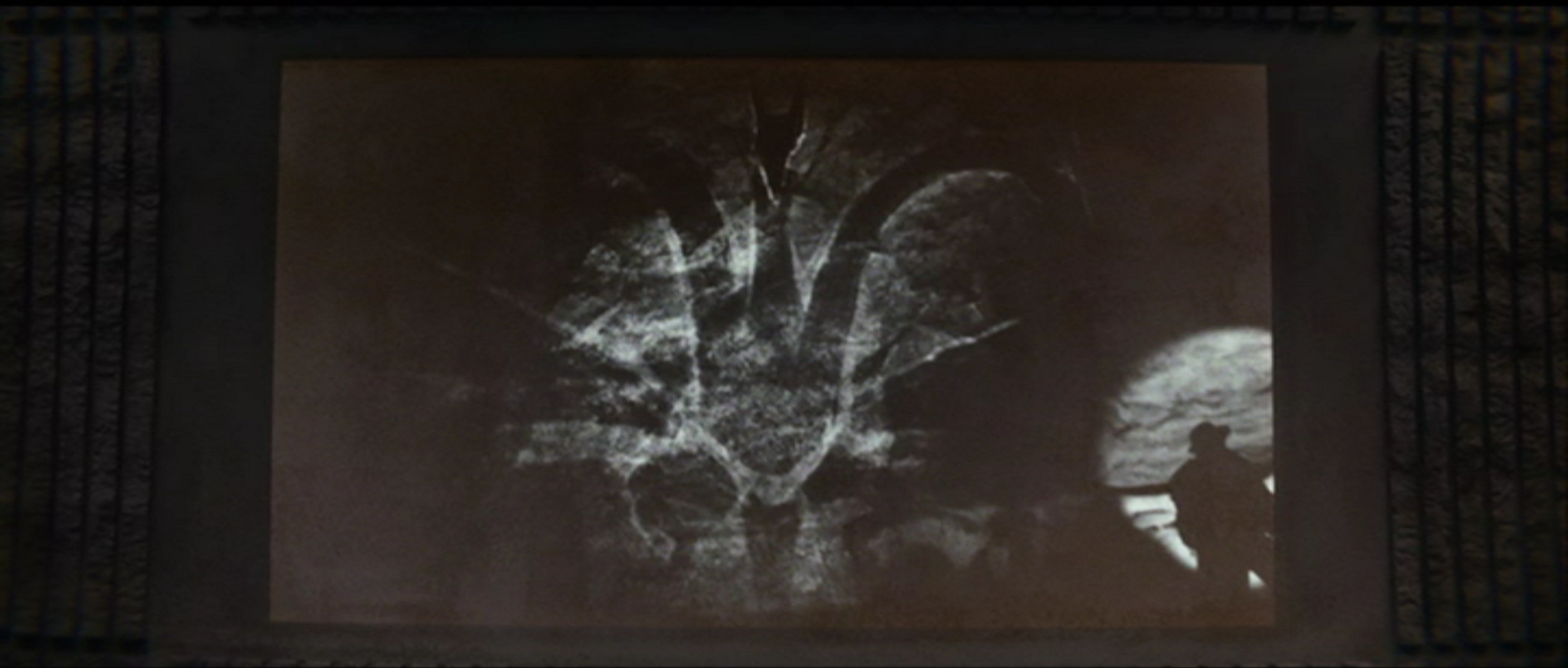
Which means Godzilla: King of Monsters will have at least three kings in it: Godzilla, King of the Monsters, King Ghidorah, and the Monarch organization. And possibly a fourth if there is a cameo by Kong. I'm looking forward to 2019.